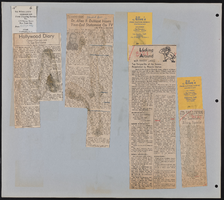Search the Special Collections and Archives Portal
Search Results
Maggie Mancuso Collection of Film Locations
Identifier
Abstract
The Maggie Mancuso Collection of Film Locations dates from 1994 to 2001 and consists primarily of color photographs of locations throughout Las Vegas, Nevada for the film
Archival Collection
Paris, France Show Programs Collection
Identifier
Abstract
The Paris, France Show Programs Collection (1950-2000) is comprised of publicity print materials of the following cabaret music halls and burlesque clubs in Paris, France: Alcazar de Paris, Casino de Paris, Folies-Bergère, Le Lido de Paris, and Moulin Rouge Paris. The collection includes programs, advertising posters, fliers, long playing record albums, photograph slides, and restaurant menus. This material was formerly known as the International Show Programs Collection.
Archival Collection
Larry A. Strate Faculty Papers
Identifier
Abstract
The Larry A. Strate Faculty Papers (approximately 1985-2023) are comprised primarily of scholarly articles and papers from the Pacific Southwest Academy of Legal Studies in Business annual conferences written by Strate during his time as a business law professor at the University of Nevada, Las Vegas (UNLV). Materials also include personal memoir written by Strate about his life.
Archival Collection

James Dean Leavitt oral history interviews: transcript
Date
Archival Collection
Description
Oral history interviews with James Dean Leavitt conducted by Claytee D. White on September 27 and October 4, 2022 for the Boyer Early Las Vegas Oral History Project. In this interview, Leavitt recalls his role in establishing a medical school at the University of Nevada, Las Vegas (UNLV), now known as Kirk Kerkorian School of Medicine. Leavitt was elected to the Board of Regents in 2004 while Jim Rogers was interim Chancellor of the Nevada System of Higher Education (NSHE), and he suggested the creation of an ad hoc committee Health Science Center Committee. In 2009, Leavitt became Chairman of the Board of Regents, Dan Klaich became Chancellor, and in the following year, Dr. Mark Doubrava joined the board. In May 2014, the planning dean was hired, Dr. Barbara Atkinson, and the UNLV School of Medicine was officially established on August 22, 2014.
Text
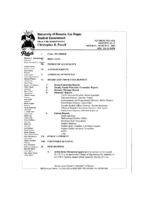
Meeting minutes for Consolidated Student Senate, University of Nevada, Las Vegas, March 31, 2003
Date
Archival Collection
Description
Text
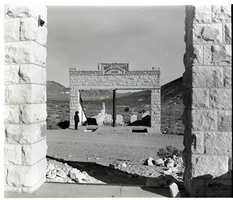
Film transparency of the ruins of the H. D. and L. D. Porter Brothers Store, Rhyolite, Nevada, November 25, 1948
Date
Archival Collection
Description
Image

Interview with Delbert Sylvester Barth, December 3, 2004
Date
Archival Collection
Description
Text
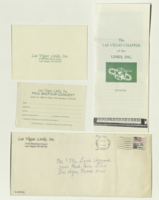
Mabel Hoggard: personal correspondence
Date
Archival Collection
Description
Folder of materials from the Mabel Hoggard Papers (MS-00565) -- Personal papers file. This folders contains correspondence from friends, family members, and various organizations. It also includes an agenda for "National Sorority of Phi Delta Kappa" from Sunday October 28, 1973.
Text
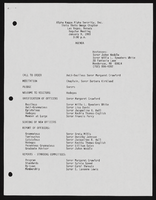
Alpha Kappa Alpha Sorority, Theta Theta Omega Chapter meeting agendas
Date
Archival Collection
Description
From the Alpha Kappa Alpha Sorority, Incorporated, Theta Theta Omega Chapter Records (MS-01014) -- Chapter records file.
Text

